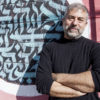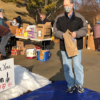“As the climate crisis worsens, the ground opening up and swallowing Korach’s band does not feel as far-fetched as it once may have. The earth is not an endless supply of resources for our consumption, and greed will only exacerbate the situation.” My grandfather, I am told, would say: “You know what Korach’s problem was? The Torah says, ‘Vayikach Korach.’ (‘Korach took.’) Korach was a taker.” The week of Parshat Korach this year marks my maternal grandfather Rabbi Mayer Weisenberg’s z’l fourth yahrtzeit. He modeled a life of Jewish values, leading by example for his family, community, and beyond. In many ways, he is the reason my life is grounded in yiddishkeit, and I dedicate this dvar torah to him. The Israelites journey on through the desert when Korach, from the tribe of Levi, gathers 250 people and provokes a rebellion. As one might expect, rebelling against Moses and by extension God did not end well: the very ground underneath their feet opens and swallows the rebels whole, along with all their possessions. The legacy of Korach’s rebellion does not end there. We learn later in the parsha that the tribe of Levi will not inherit its own portion of […]















